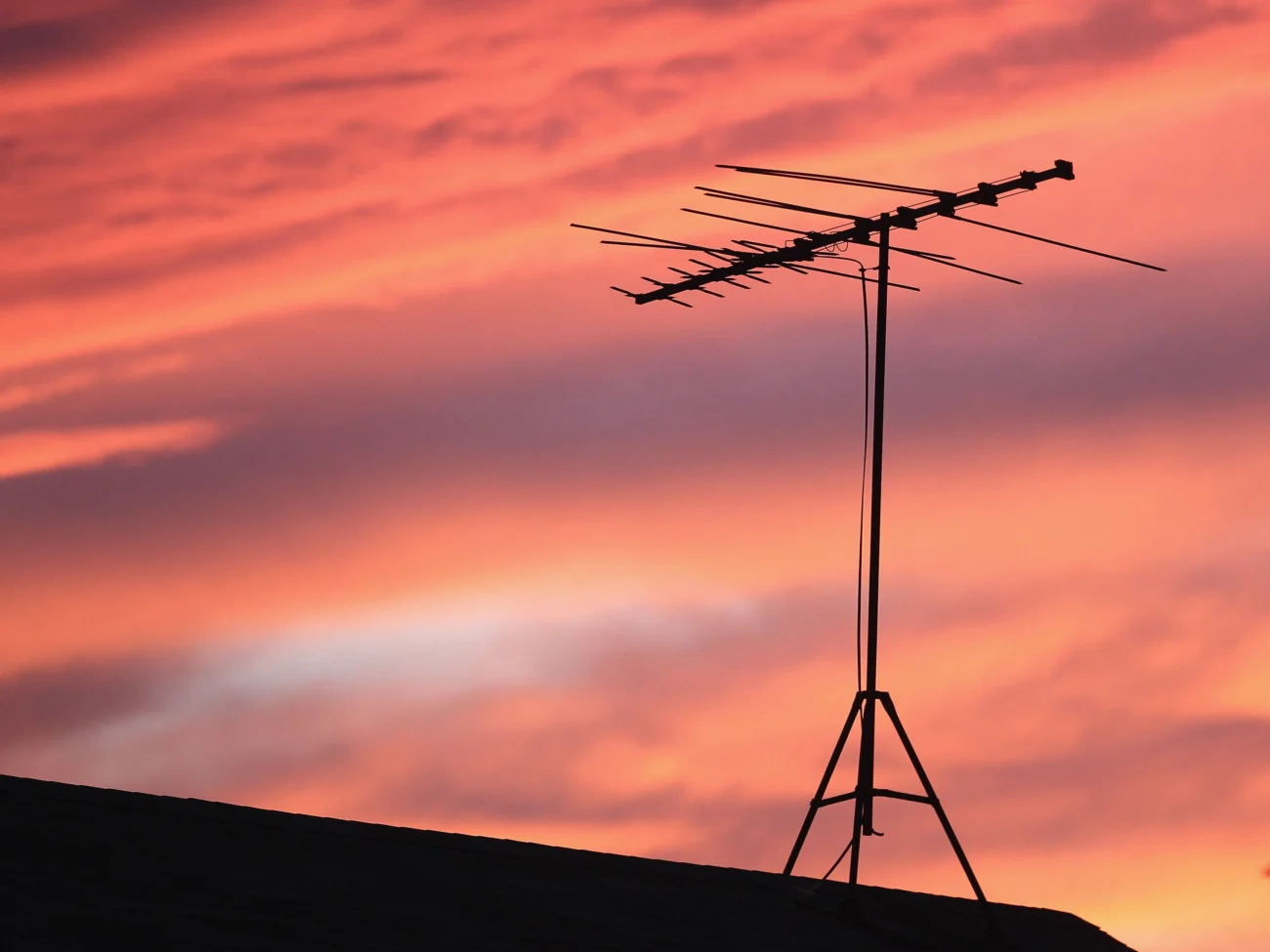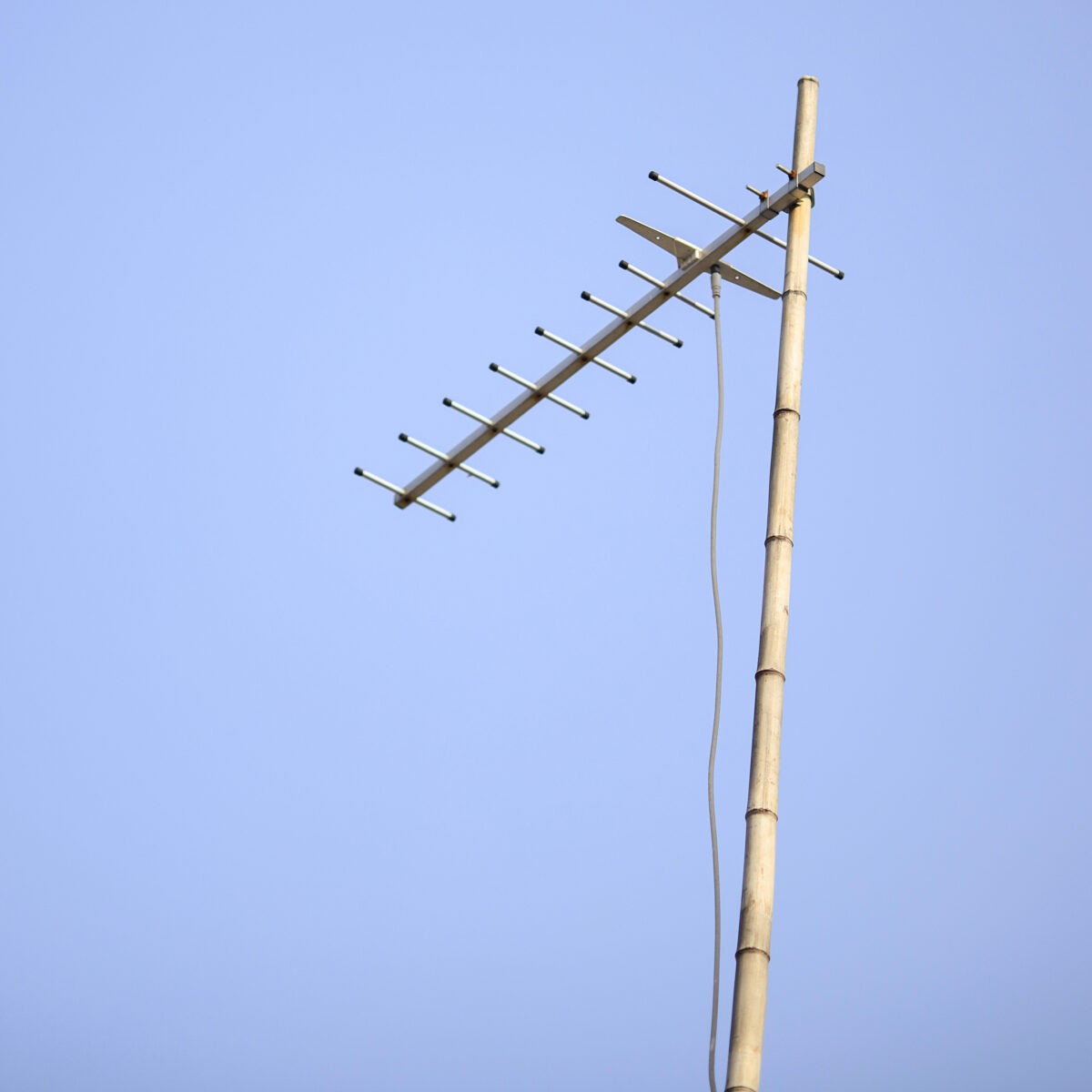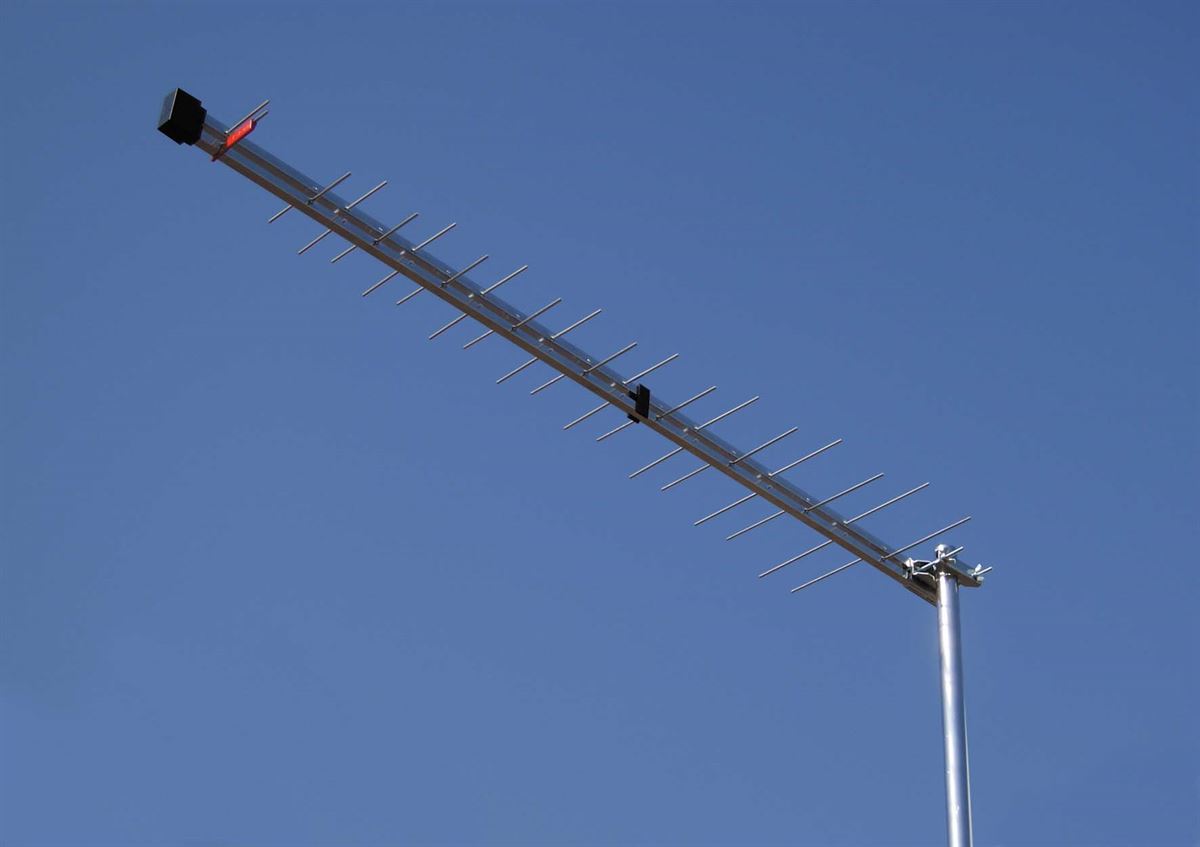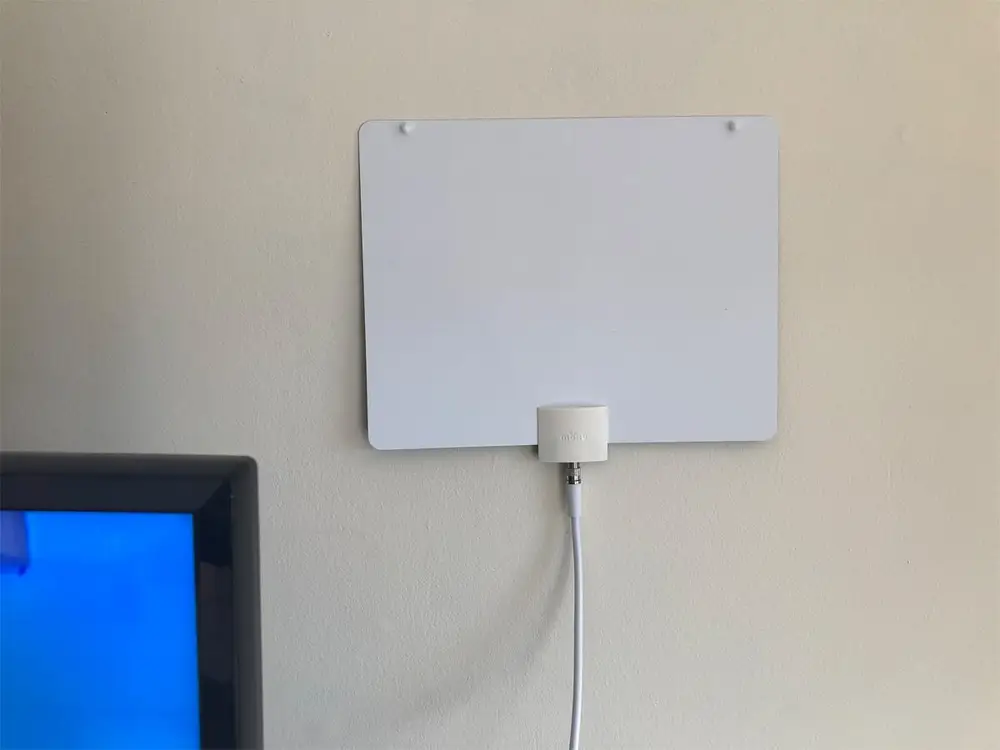
Choosing your first TV aerial can be a daunting task at times. There are many different types to choose from, all of which have their unique purposes, advantages, and disadvantages.
Here, we’ll break down every type of TV antenna to help you pick the most suitable one for your specific needs.
So, without any further ado, let’s get right into it!
Yagi aerials

Yagi TV aerials are extremely popular in the UK due to their affordability and durableness.
While there is a variety of Yagi models available, they all work on the same principle. It’s a long rod with conductive elements that are used to pick up the signal. They’re not the most powerful antenna available, but they can still provide excellent reception when positioned properly.
Again, there are many different Yagi antenna models you can choose from, so make sure you do your research if you opt for this type of aerial for your own home.
High gain aerials
High gain aerials are perfect for rural areas and other locations that have low reception issues. They’re one of the most powerful antenna types on the market, which means they’re usually a bit pricey. However, when you’re located far from the broadcast towers, it may be worth the price. You’ll be able to watch your favorite programs without any interruptions!
As with all other types of antennas, high gain antennas come in various sizes, power levels, and designs. We recommend that you seek assistance from an industry professional before you make your purchase in order to get the best possible results for your home.
Log periodic aerials

Log periodic antennas are mostly used for digital TV as they’re designed to fend off impulse noise that leads to pixelation. It’s a multielement antenna that comes in various sizes, designs, and reception power levels. Be it as it may, it’s one of the most popular options for digital TV owners, as it’s inexpensive, powerful, and easy to install.
If you’re interested in the principles on which the log-periodic aerial works, contact the nearest antenna installer in your local area for more information. It’s crucial that you examine each and every option available to you, so you can ensure the best possible results at the end of it all.
Grid aerials
If you’ve ever seen a grid aerial, you probably didn’t recognize it as a TV antenna right away. This type is a bit outdated nowadays, as most people rely on digital television. If you’re someone who prefers analog TV, then this is the antenna for you. It’s a flat aerial that has its elements positioned in its interior, so you can easily differentiate it from the other types of aerials.
It’s not very well-suited for low-reception areas, so avoid it if you’re located somewhere far away from the TV towers.
Contract aerials

Contract aerials work on the same principle as Yagi ones, but they’re usually less powerful. They’re considered to be entry-level antennas, so you shouldn’t get them if you’re not living somewhere where you’ll have suitable reception.
The main advantage of the contract aerial is that it’s extremely affordable and cheap to install. So, if you’re working on a tight budget and are close to the broadcast tower in your city, they could still be a viable choice.
X type and Bow tie type aerials
These two are both just a variation of a high gain antenna. They’ve gotten their names because of their unique designs – the X antenna has its dipoles in the shape of an „X“, while the bow tie one utilizes the bow tie shape in its design.
These are both extremely powerful, but the X type is much more common due to its increased durability. They should be installed by professional installers such as those at tvaerialinstaller for the best possible results.
Indoor antennas

Indoor antennas are extremely practical, but they’re not for everyone. You should only get these if you live extremely close to the TV transmitter. They should always be placed somewhere high up and near the windows if you want them to work. They’re the most affordable option by far as they don’t require professional installation.
Of course, like all other types of antennas, there are many different models you can choose from when it comes to indoor antennas. Make sure you’ve done proper research and made your choice as carefully as you can.
So, how do I choose the perfect aerial type for my circumstances?
As you can probably guess by now, choosing the best aerial solely depends on your specific needs and requirements. The first and the most important factor you’ll need to consider is your location. If you live in a remote area with low reception, the best choice is a high-gain aerial, for example. Make sure you consult with a professional prior to making your choice to ensure the aerial you’ve picked is powerful enough to get you the signal you deserve.
Other than that, you should consider your budget, aesthetic appeal, and whether the installation is possible or not. For example, if you live in an apartment complex with a strict corporate body, indoor antennas might be your only choice.
Once you’ve considered all the above-mentioned factors, we’re certain you’ll find the type that fits your needs the most. If you still feel lost after that, though, you can always consult with a professional to seek additional tips and advice.
The bottom line
Choosing between different types of antennas can be a bit difficult if you don’t have any prior knowledge about them.
Generally speaking, research is your best friend! As long as you keep on researching and comparing different options based on their price, size, signal quality, as well as your location and your budget, you’ll certainly find what you’ve been looking for.
We hope our article helped you understand the differences between the most popular types of aerials and we want to wish you the best of luck in all of your future endeavors.